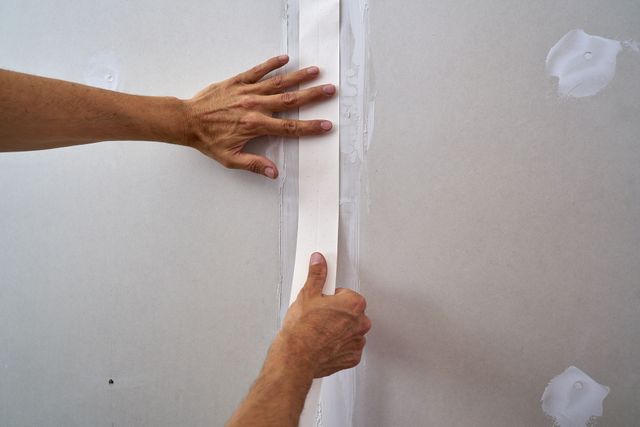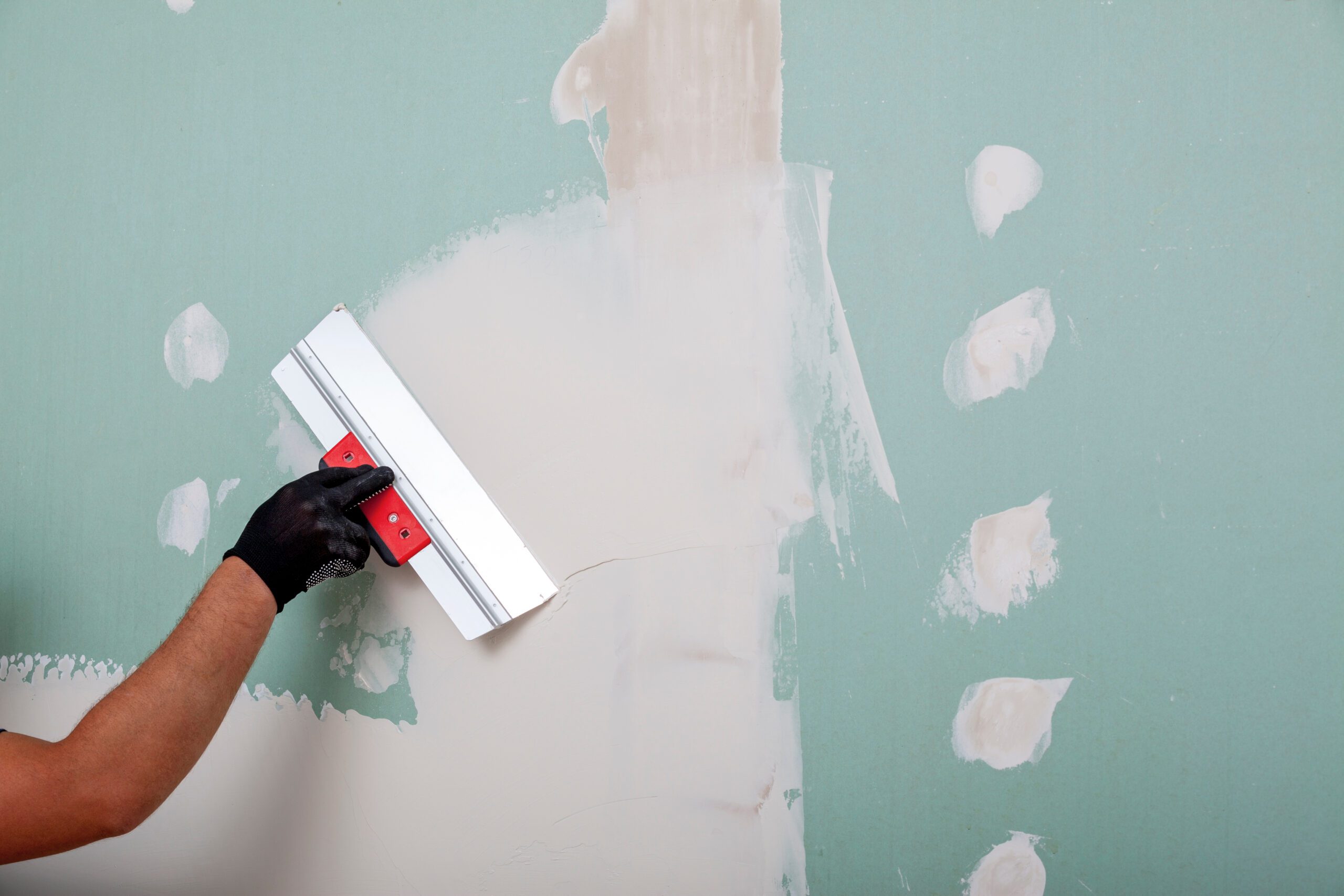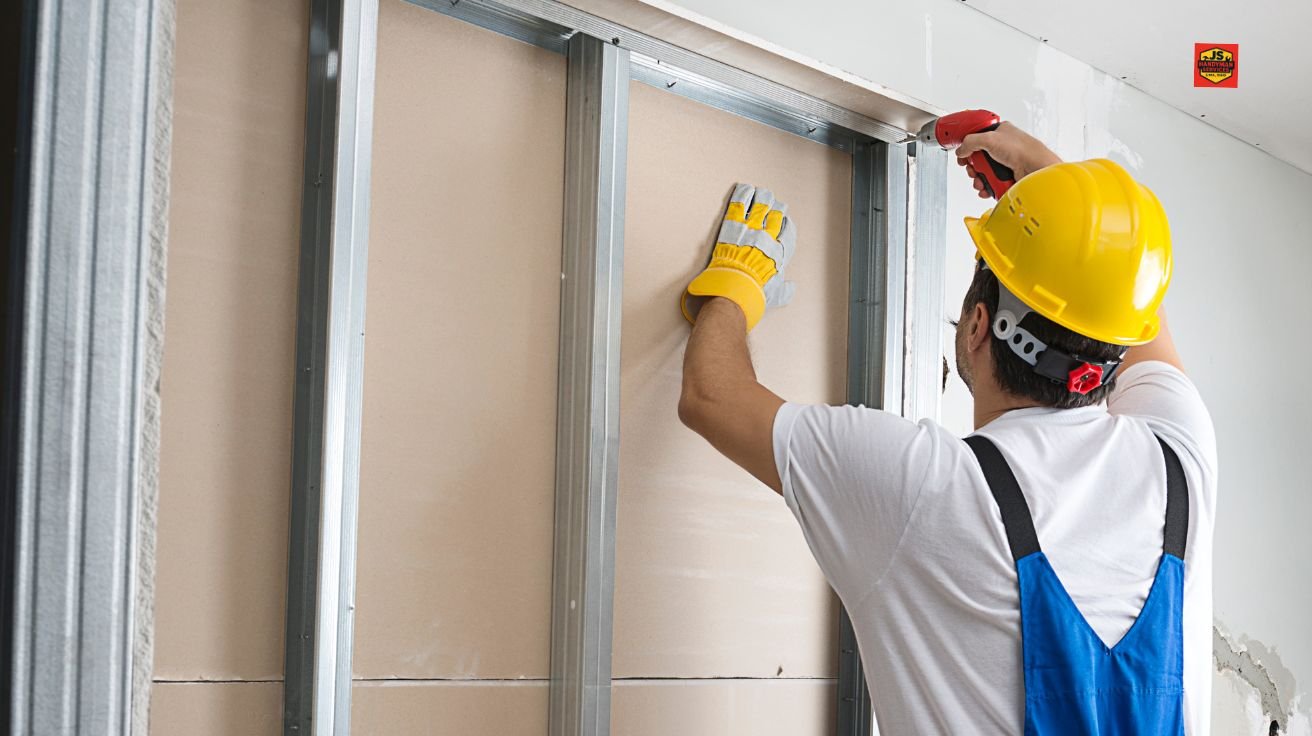A Comprehensive Overview to Mastering Drywall Repair and Setup
This guide uses a thorough exploration of drywall repair and installation, dealing with both beginners and seasoned professionals. It details important tools, strategies for patching and hanging sheets, and the important finishing procedures. drywall contractor. By understanding typical risks, people can attain polished results. Mastering these abilities not just boosts one's home yet additionally builds confidence in DIY ventures. What fundamental tips will assure a successful job from begin to finish?
Necessary Devices for Drywall Repair Service and Installment
When beginning on drywall repair service and installation, a couple of vital devices can considerably improve the effectiveness and high quality of the work. A drywall blade, usually available in different sizes, is vital for using joint substance and smoothing seams. A taping blade is additionally required for feathering sides and making certain a smooth surface. Furthermore, a drywall saw or utility knife allows for specific cutting of drywall sheets to fit any kind of room.

Step-by-Step Overview to Patching Holes
Patching openings in drywall is a simple procedure that can bring back the wall surface's look and honesty. To start, the location around the hole ought to be cleansed and any loosened particles got rid of. For small holes, a basic spackle or joint substance can be used with a putty blade. Larger holes might need a patch; an item of drywall can be cut to fit the hole, protected with adhesive or screws, and afterwards taped around the sides. As soon as the spot remains in area, joint substance is used over the patch and feathery out to mix with the surrounding wall. After the compound dries out, fining sand is required to accomplish a smooth coating. The repaired area can be topped and painted to match the rest of the wall surface. This approach guarantees a smooth repair work, boosting the total look of the drywall and keeping its structural integrity.
Methods for Hanging Drywall Sheets
After effectively repairing openings in drywall, the following step includes hanging brand-new drywall sheets to create a smooth surface area. To achieve this, one should start by gauging the wall area accurately and reducing the drywall sheets to fit. It is important to hang the sheets horizontally for much better structural integrity, beginning from the top and working downwards.
Utilizing a drywall lift can simplify the process, especially for ceiling installments. When positioned, securing the sheets with drywall screws at periods of concerning 12 inches along the sides and 16 inches in the area is crucial. This guarantees a firm hold and minimizes the threat of sagging. For corners, the sheets should be cut to fit snugly, enabling cleaner seams. It is a good idea to surprise the joints in between sheets to reinforce the total structure, developing a more resilient coating prepared for the following phase in the drywall installment process.
Finishing Touches: Taping and Mudding
Completing the drywall installment includes the crucial steps of mudding and taping, which ensure a polished and smooth finish. Taping needs the application of joint tape over the joints in between drywall sheets. Drywall Installation Ogden Utah. This tape can be either paper or fiberglass mesh, with each type offering unique advantages. After taping, the next step is mudding, where joint compound, or "mud," is related to cover the tape and fill up any kind of imperfections
Using a drywall knife, the substance should be spread out uniformly, guaranteeing a feathered side to minimize visible adjustments. Numerous layers are typically needed, with fining sand in between each layer to achieve a seamless surface. Mindful focus throughout this process is essential, as it greatly impacts the final look of the wall surface. With the ideal method and patience, the end outcome will certainly be a perfect foundation ready for painting or finishing touches.
Common Mistakes to Prevent in Drywall Projects

One more common blunder is not permitting enough drying out time between coats, which can catch wetness and compromise the coating. Moreover, overlooking to feather the sides correctly can create visible lines and flaws. Ultimately, missing sanding or making use of inappropriate methods may leave rough areas. By knowing these risks, people can considerably enhance the quality of their drywall jobs and achieve a professional-looking finish.
Often Asked Questions
Can I Fix Drywall Without Expert Aid?
Yes, one can fix drywall without professional aid. With the right devices, materials, and guidance, people can successfully take care of minor repair services. Considerable damages may call for professional experience for suitable results and toughness.
Exactly How Lengthy Does Drywall Compound Require To Dry?
Drywall compound typically takes between 24 to 2 days to dry entirely, depending on variables such as humidity and temperature level. Thinner layers might dry quicker, while thicker applications call for more time for suitable outcomes.
What's the Best Kind Of Paint for Drywall?
The ideal sort of paint for drywall is commonly a water-based latex paint. It offers excellent protection, resilience, and convenience of application, making it perfect for indoor wall surfaces while permitting simple cleaning with soap and water.

Just how Do I Stop Mold And Mildew on Drywall?
To stop mold and mildew on drywall, assurance appropriate air flow, control humidity degrees, make use of mold-resistant materials, and promptly address any kind of leaks. Regular assessments and prompt remediation of water damage are also essential for long-term avoidance.
Is Drywall Recyclable After Elimination?
Drywall is recyclable after removal, offered it is devoid of pollutants like mold, paint, or various other dangerous products. Recycling centers can process it into brand-new items, promoting sustainability and reducing landfill waste in construction.
When beginning on drywall repair work and installation, a couple of necessary tools can greatly boost the effectiveness and top quality of the work. After efficiently repairing openings in drywall, the following step entails hanging new drywall sheets to develop a smooth surface. Finishing the drywall installment involves the vital actions of mudding and taping, which guarantee a smooth and refined surface. Attaining a refined coating in drywall jobs can be difficult, and numerous common blunders can weaken the quality of the work. Yes, one can repair drywall without expert aid.